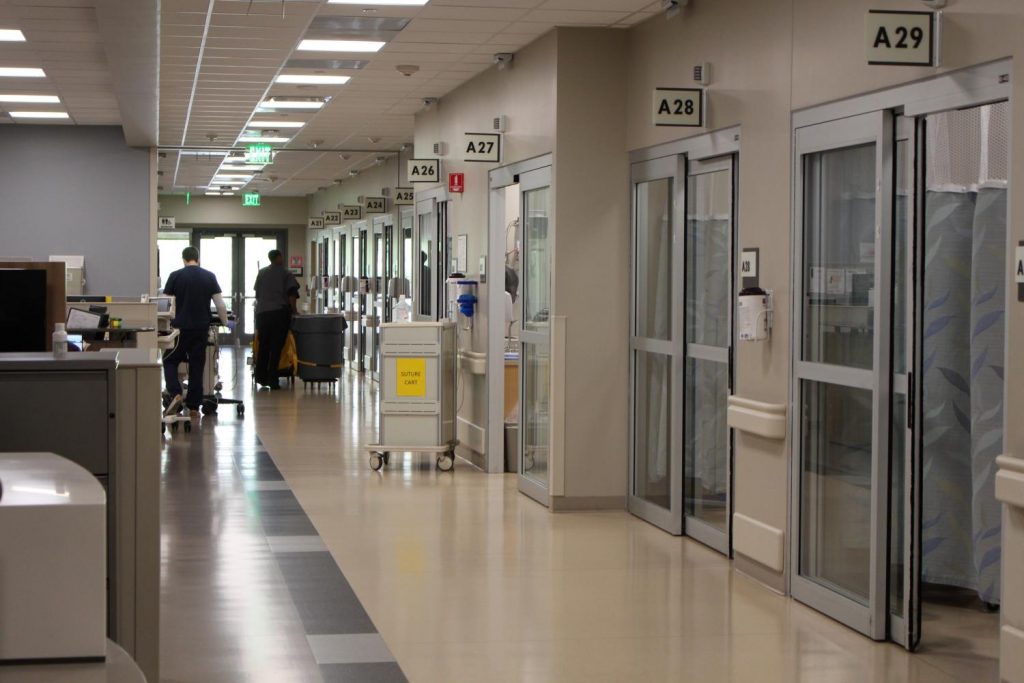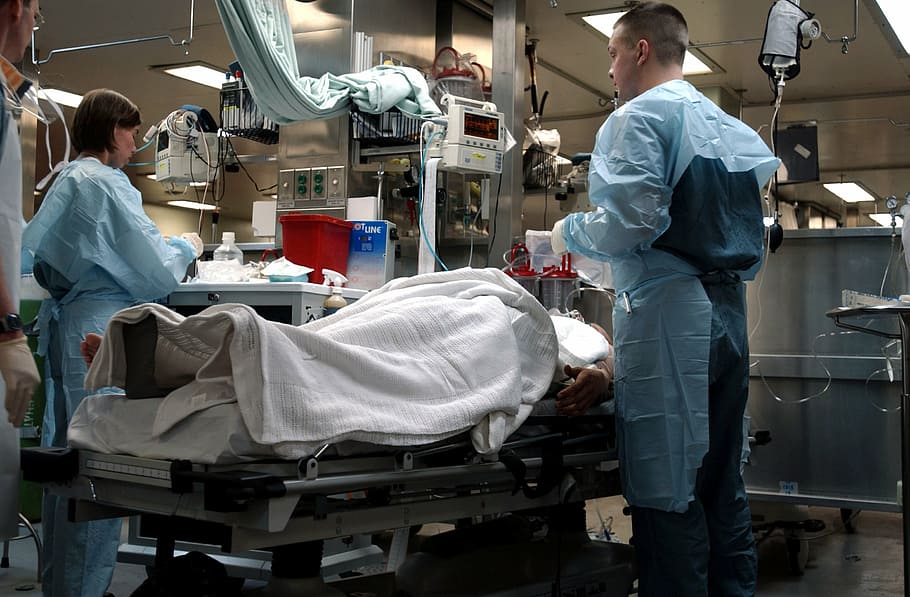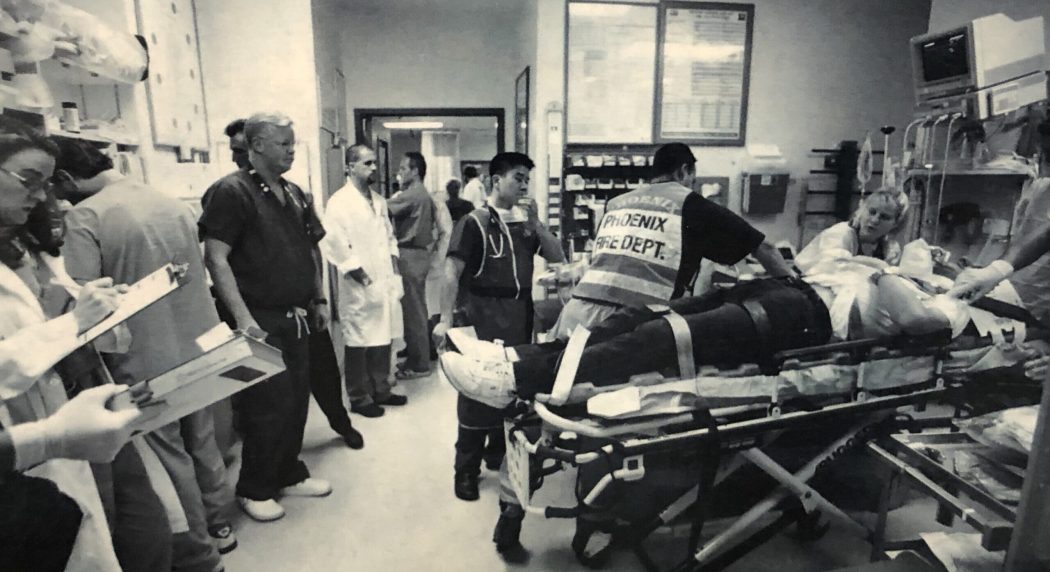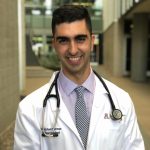There are a number of inevitabilities in life. Death, billionaires avoiding taxes, and people asking med students what specialty they want to go into. As someone who entered med school with the singular goal of emergency medicine (as any of my classmates could probably tell you) this question has been a lot harder to answer recently with all the news of EM’s future. It’s been the topic du jour online for quite a few jours, and a number of discussions with residents and attendings on this subject have still left me without any mental clarity. This topic has not only lived rent free in my head for the past few months, it’s also raided my fridge, drunk all of my bourbon, and worn out my couch’s upholstery like the world’s worst roommate. So I’m officially evicting it, and if you’re still reading at this point hopefully you’ll humor me as I give a more personal, subjective take on the situation, address a few points not discussed in The Differential’s previous article, and attempt to figure out my future.
To briefly summarize the situation, the American College of Emergency Physicians (ACEP) published a report in April 2021 stating that at the current rates of new EM residencies opening and the increasing number of NPs and PAs working in emergency departments, there could be a surplus of over 9,400 EM physicians in the US by the year 2030 [1]. This has caused much wailing and gnashing of teeth; finishing residency and not having assured employment is a terrifying thought, after all. The report was particularly troublesome to medical students considering EM given the considerable financial and time investments we put on the line when we enter this profession. Furthermore, the report’s speculative nature (albeit data-driven) and discussion of APPs has made it somewhat contentious.
In the July edition of this publication, two of our colleagues wrote about the ACEP report from April 2021, and if you haven’t read their excellent summation, I suggest you give it a look [2]. On the “supply” side, I believe they correctly identified the root of the issue: the deluge of new EM residency programs at for-profit hospitals rather than teaching hospitals. According to the original ACEP report, the Accreditation Council for Graduate Medical Education (ACGME) cannot deny a hospital from opening a new residency program if all of the criteria are met; the implication being that they would likely halt the establishment of some of these programs had they the capability. Ethical questions regarding abuse of cheap labor aside (although those should definitely NOT be put aside), these programs make me nervous given their unproven employment and educational history.

Interestingly, pharmacists currently face a similar problem of oversupply after many new pharmacy schools opened in the 1990s and 2000s to address a shortage, with the subsequent years not yielding an appropriate increase in jobs. As a result, more and more pharmacists now have to complete a residency to find employment, especially in a hospital or other non-retail setting, and some also pursue a fellowship. None of these post-graduate programs were nearly as functionally required 10-15 years ago, according to one pharmacist I spoke with (who is also my mother). The pharmacists’ solution to the problem of oversaturation has been to specialize, but I personally don’t see this as the singular answer for emergency medicine. Most of the post-EM fellowships focus on specific niches within emergency medicine, not a separate scope of practice like those seen in GI, cardiology, etc; most of these physicians will still primarily work in emergency departments after their fellowships. That being said, fellowships can certainly give you an edge when it comes to finding employment, so you should absolutely pursue programs that interest you. Some training programs do allow for a different work environment (toxicology, critical care, palliative care), but in my opinion fellowships are not the widespread solution to the dilemma of insufficient jobs within EDs.
With regards to the “demand” aspect of this issue, I felt that a few critical conclusions drawn by ACEP were missing from the July Differential article, especially with regard to non-physician providers. The recommendations in the full report included clear delineation of scope of practice, pushing for standardizing training and certification for APPs, and categorizing emergency departments (similar to how trauma centers are categorized) based on metrics of patients seen by physicians vs non-physicians. These solutions may disproportionately affect rural emergency departments that staff higher proportions of APPs, and more concerted efforts should prioritize getting physicians to those hospitals. I won’t pretend to have the solution for encouraging more EPs to practice in rural areas (although higher salaries, loan forgiveness programs, and expanding Medicare would be a start)[3], but having the primary provider be anyone but a residency-trained physician is a disservice to those patients, and a requirement that an on-premises physician see all patients could encourage the hospitals to employ more docs.
The adoption of a team-based, physician-led model where every member performs at the top of their practice has led to better outcomes and patient satisfaction [4-5]. We cannot forget that the leadership of a physician is not an optional part of this formula. There is simply no replacing the training one gets from an emergency medicine residency, especially given the difficulty and vital importance of emergency care – regardless of the patient’s acuity. And yet, the AANP and AAPA describe the physician-led model as “obsolete” and “incredibly burdensome” [6-7]. These beliefs violate the spirit of the team-based model, and are intrinsically tied to the decreased demand for physicians especially in the eyes of increasingly consolidated corporate healthcare systems. It is our responsibility to stand up for physician-led medicine, not just to support our physician colleagues but to protect patient safety. It’s a false dichotomy to say that arguing for a higher proportion of physicians in EDs is the same as disrespecting or not supporting NPs and PAs. It is surely possible to respect the knowledge and experience of APPs and care for patients alongside them while recognizing that the pushes from their governing bodies may be actively harming physician employment. APPs serve a valuable role in EDs, provide excellent care, and there is always room at the table for everyone who wants to help patients. Patient care is not a zero sum game – but employment at an appropriate salary, to some degree, is. Failing to acknowledge this will only harm our profession and our peers who may find themselves fighting for a job.

At the end of the day, this is a gigantic, multifaceted issue and the most impactful measures will likely come from the governing bodies of emergency medicine. So what can we as medical students do about this? Firstly, if you choose to pursue emergency medicine, be critical of where you apply. I anticipate that the physicians graduating from newer programs and those at for-profit hospitals will have a rockier road ahead than docs graduating from programs with solid, proven track records. That’s not to say that the training at newer programs is sub-par, but in the face of physician oversupply it’s not unreasonable to assume that employers might highly value the reputation and the connections made through well-established residencies. Secondly, consider a fellowship that might spark your interest and give you a crucial feather in your cap when EDs are hiring, as this may also help ward off declining physician salaries. Finally, stand up for our profession and support other physicians. Always remember that team-based care is physician-led care, and not physician-optional care. This was the conclusion of the ACEP taskforce, and is also the official stance of ACEP, AAEM, and EMRA [8-10].Have the courage to disagree with the pushes from the PA and NP governing bodies who argue that they should be able to practice autonomously. I’m passionate about emergency medicine and will likely still pursue it as a specialty. I own a road bike after all, that’s practically a contractual obligation. All of us should be aware of both the advantages and challenges of whatever specialty we choose, and I can think of no better group than emergency physicians to quickly assess a situation, enact steps for improvement, and be flexible enough to roll with the punches.
References
- Rosenberg M. EM Physician – Workforce of the Future. ACEP. https://www.acep.org/globalassets/sites/acep/media/workforce/emphysicianworkforceofthefuture_4920.pdf. Presented March 9, 2021. Accessed September 1, 2021.
- Samsamshariat, T, Wolford, L. The Unemployed Doctor. The Differential. http://www.thedifferentialdx.com/the-unemployed-doctor/. July 13, 2021. Accessed September 1, 2021
- Koski-Vacirca, R. What’s Happening To Rural Emergency Departments? EMRA. https://www.emra.org/students/newsletter-articles/whats-happening-to-rural-emergency-departments/. Accessed September 2, 2021.
- Optimal team-based health care is associated with improved patient outcomes and physician well-being. ACP Newsroom. https://www.acponline.org/acp-newsroom/optimal-team-based-health-care-is-associated-with-improved-patient-outcomes-and-physician-well-being. September 17, 2018. Accessed September 3, 2021.
- Will KK, Johnson ML, Lamb G. Team-Based Care and Patient Satisfaction in the Hospital Setting: A Systematic Review. J Patient Cent Res Rev. 2019;6(2):158-171. April 29, 2019. Accessed September 3, 2021.
- Issues at a Glance: Full Practice Authority. AANP. https://www.aanp.org/advocacy/advocacy-resource/policy-briefs/issues-full-practice-brief. Revised August 2021. Accessed September 3, 2021.
- Optimal Team Practice. AAPA. https://www.aapa.org/advocacy-central/optimal-team-practice/. Accessed September 3, 2021.
- Statement on Physician-Led Emergency Care Teams. ACEP. https://www.acep.org/administration/personnel–team-management/statement-on-physician-led-emergency-care-teams/ September 18, 2020. Accessed September 3, 2021.
- Updated Position Statement on Non-Physician Practitioners. AAEM. https://www.aaem.org/resources/statements/position/updated-advanced-practice-providers. Modified September 1, 2020. Accessed September 3, 2021.
- Policy Compendium. EMRA. https://www.emra.org/globalassets/emra/about-emra/governing-docs/policycompendium.pdf. April 2021. Accessed September 3, 2021.
John Michael Sherman is a member of the UA College of Medicine - Phoenix Class of 2023. Born in Chicago, IL, he's been an Arizona resident for 15 years but is still heat-intolerant. He received a degree in Jazz Trumpet Performance from ASU and was a professional freelance musician for several years before starting medical school. He enjoys exploring new recipes in the kitchen, swing dancing with his wife, and (for some reason) riding his bike for long distances.


